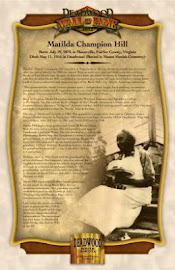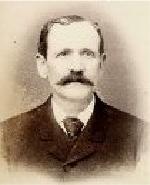 Ann Haber Stanton
Ann Haber StantonSouth Dakota Jewish Historian
Photo courtesy Ann Stanton
The Synagogue of the Hills, heir to a rich history, today represents the only Jewish community in Western South Dakota. The Synagogue traces its roots to the Gold Stampede days of 1876, when news of gold in the streams of Dakota’s Black Hills spread like wildfire. Throngs of prospectors, restless adventurers, gamblers and entrepreneurs ventured into the wilderness in search of what only the lucky few among them would find- great wealth in the gold and all that came with it. Ore bearing streams ran through the thick, dead brush in the gulch from which Deadwood derives its name.
By horseback and mule, the first Jews to arrive were enterprising pioneer merchants and businessmen, willing to stake their lives and fortunes on the promise of great success in Dakota Territory. It was a difficult and dangerous undertaking. They found a lawless frontier, needing their talent and courage to help establish a stable community.
The Deadwood of 1876 was only a string of mining claims, tents and crude wooden structures, but the gold strike called for businesses to be started, and an explosion of growth ensued. However, the landscape and thick vegetation set the scene for a succession of fires and floods which regularly rampaged through Deadwood Gulch, forcing residents from homes and businesses, challenging them to either rebuild or retreat. Each rebuilding, each resolute stand against the destruction, produced a triumphant new structure, more fireproof and sturdy than its predecessor.
One of the first business establishments, the Big Horn Grocery, started in 1876 by P.A. Gushurst, was initially housed in a tent. Gushurst soon sold out and moved to Lead. The little business was bought by Jacob Goldberg who later renamed it Goldberg’s Grocers. The grocery operated continuously through the 1990s. Goldberg's is now Goldberg's Casino, in the same location, but having been rebuilt many times over. The last remnant of the old Goldberg’s Grocers is its delivery entrance door on Broadway, the narrow alley behind the building.
 Jake Goldberg
Jake GoldbergPhoto courtesy Adams Museum & House
Solomon Star, partner of Deadwood’s first Sheriff, Seth Bullock, was a respected Jewish businessman and prominent civic leader. The partners built a flourishing hardware store on the site of today’s Bullock Hotel. That same sandstone building, Star and Bullock’s Hardware Store, now renovated and refurbished as the Bullock Hotel, appears in early pictures of territorial Deadwood’s Main Street. The S&B Ranch raised high-grade crops and thoroughbred horses, and is the site of the city of Belle Fourche. Sol Star helped organize the first fire department and was an early postmaster. He was active in the political and civic life of Deadwood from its earliest days. Republican representative to the territorial legislature, Deadwood’s mayor for at least 6 terms, Star served his community long and well.
 Sol Star
Sol StarPhoto courtesy of Deadwood Library
Harris Franklin, ne Finkelstein, an early immigrant from Eastern Europe, came to America as a youngster. Starting as a pack peddlar, a common occupation for young Jewish men in those times, he went on to build a great fortune as a banker, cattleman, owner of the Golden Reward gold mine, and main partner in the Deadwood Business Club, the venture which built Deadwood's Historic Franklin Hotel. The Adams house was originally the Franklin family home, now a National Historic Landmark that was built for Harris Franklin in 1890 by Simeon Eisendrath, a renowned Chicago and New York synagogue architect.
Harris’s son, Nathan, served as mayor of Deadwood, the second Jewish man to hold that office.
 Nathan Franklin
Nathan FranklinPhoto courtesy Adams Museum & House
The first telephone exchange in Deadwood was established and managed by Paul Rewman, an English Jew. His wife, Mabel, a non-Jew, earned a reputation as an early campaigner for women’s rights. Both Rewmans have been recognized in "Who's Who in South Dakota."
 Paul Rewman
Paul RewmanPhoto Courtesy Adams Museum & House
There was Jewish worship and holiday observance from the earliest days of settlement. Although they never had a formal synagogue building, they gathered for worship, usually at the Masonic Temple, but sometimes at Elks Hall and at other times at a private home, such as the home of the Sam Margolins at 4 Lincoln Avenue.
Their Torah, the Old Testament scroll, now known as the "Deadwood Torah", came from Koenigsburg, Germany, in 1886, with Freda Lowenberg, young bride of Benjamin Blumenthal. The Torah traveled overland across Europe, over the Atlantic, across the United States by train, and finally by stagecoach into the Hills.
The first lay leader and acting rabbi of the Jewish community was Nathan Colman, father of Blanche, Theresa and Anne Colman. Judge Colman, so called due to his position as Justice of the Peace, arrived in Deadwood in 1876, where he and his wife, Amalia, had a large family. The Colmans’ youngest daughter, Blanche, made her mark as one of the first woman lawyers in the State of South Dakota, working for the Homestake Gold Mine as legal counsel for most of her life.
In 1896 the Hebrew Cemetery Association purchased cemetery land on Deadwood's Mt. Moriah, high on a hill overlooking Deadwood. The section came to be known as "Hebrew Hill." Some of western South Dakota's pioneering Jewish citizens are buried here, including Harris Franklin and his wife Anna; the Colman family, including six of their seven children, four of whom died in early childhood; two separate Jacobs families; the Blumenthals; the Finks; the Zoellners; the Wertheimers; the Margolins; the Schwarzwalds; the Krainsons; and the Levinsons, among others. A walk through the Jewish section reveals an occasional grave marker bearing a small stone, evidence of a visitor who paid their quiet respects. The small number of gravestones is no indicator of the true numbers of Jewish people who lived and left an impression in the Black Hills, said by Blanche Colman to have been “in the hundreds.” Most, like the Goldbergs and Sol Star, are buried elsewhere. Some of the beautiful Hebrew inscriptions are easily legible, but though some are too eroded to read, each is capable of telling a story of a Jewish person who left their footprint in a remote wilderness. Mt. Moriah has been dedicated as a National Historic Cemetery.
Many Jewish people blended into the Deadwood community. They became respected leaders in business, social and civic affairs. At some point in Deadwood’s history, fully two-thirds of all business establishments on Deadwood’s Main Street were either owned, operated, or occupied by Jewish merchants. With the help of talented Jews assuming positions of leadership and influence, Deadwood became the original commercial and social hub of the Black Hills.
As the gold rush waned and Deadwood's Jewish population dwindled, the younger generation, seeking higher education and Jewish mates, gradually drifted away. Due to Rapid City's favorable location and Ellsworth Air Force Base having been built, in the 1950s the Deadwood Torah, center of Jewish worship, finally was brought to Rapid City. Now it is read from on Sabbaths, certain holy days, and at the Bar or Bat Mitzvah, coming of age, of the young people who carry the traditions of their predecessors on into the future.
See Deadwood's Jewish historical markers, erected in honor of Deadwood's Jewish Pioneers by the Jewish American Society for Historical Preservation, Jerry Klinger, Founder and CEO, in cooperation with Mary Kopco, Director of the Adams Museum and House, and Ann H. Stanton~~
~~http://www.jewish-american-society-for-historic-preservation.org/completedprgms2/deadwoodsouthdakota.html
~~ http://www.adamsmuseumandhouse.org/



 Site Contributor, Bob Heller is very interested in Deadwood High School and bands in general. He was close friend of DHS Band Director Lavern Clark. See http://dhsclassmates.blogspot.com/2007/07/prince-of-music-laverne-vern-clark.html select back arrow to return to this post.
Site Contributor, Bob Heller is very interested in Deadwood High School and bands in general. He was close friend of DHS Band Director Lavern Clark. See http://dhsclassmates.blogspot.com/2007/07/prince-of-music-laverne-vern-clark.html select back arrow to return to this post.












